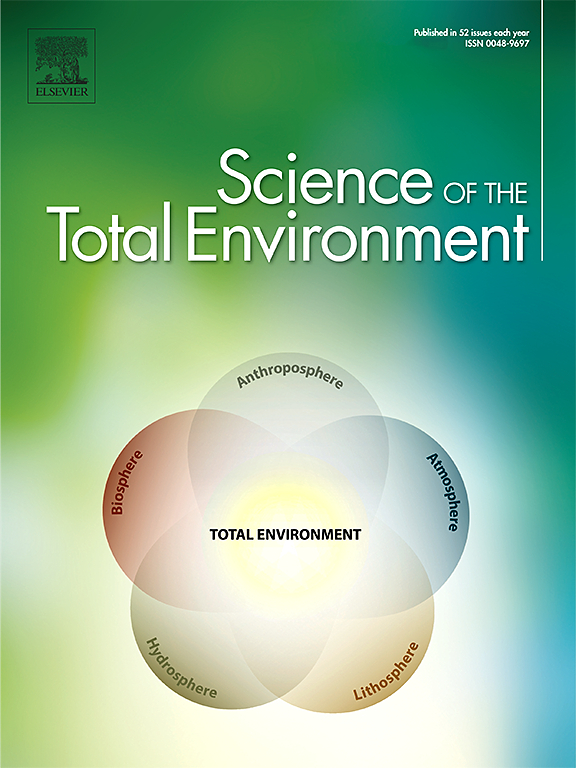Occurrence of fecal indicator bacteria and microbial source tracking markers along the Texas Gulf Coast adjoining two barrier islands
IF 8.2
1区 环境科学与生态学
Q1 ENVIRONMENTAL SCIENCES
引用次数: 0
Abstract
This study investigates the occurrence and sources of fecal contamination along the Texas Gulf Coast, focusing on two barrier islands: Sargent Beach and Matagorda Peninsula. Surface water samples from six sites were collected over 19 months and analyzed for fecal indicator bacteria (FIB) and microbial source tracking (MST) markers, including human (HF183), canine (BacCan), avian (GFD), and enterococci (Entero1) markers. Culturable enterococci were detected in all samples, often exceeding safety thresholds, indicating widespread fecal contamination. Statistical analyses revealed significant differences in marker concentrations among sites (ANOVA, p < 0.05) and correlations between marker levels and environmental parameters. Entero1 was the most prevalent marker, showing significant differences among sites (Kruskal-Wallis Test, p < 0.05). HF183 was less frequently detected, suggesting limited human fecal pollution. BacCan was more common in Sargent Beach, correlating with higher population density and developed land. GFD was consistently present, reflecting the significant impact of avian sources. Spearman's rank correlation analysis showed moderate positive correlations between Entero1 and both GFD and BacCan (p < 0.05). The study highlights the need for targeted management practices to mitigate fecal pollution, emphasizing the importance of addressing canine and avian sources. Recommendations include public education on pet waste management, improved septic system management practices, and potential management of gull populations. This research provides critical insights for beach management authorities to enhance water quality and protect public health along the Texas Gulf Coast.

求助全文
约1分钟内获得全文
求助全文
来源期刊

Science of the Total Environment
环境科学-环境科学
CiteScore
17.60
自引率
10.20%
发文量
8726
审稿时长
2.4 months
期刊介绍:
The Science of the Total Environment is an international journal dedicated to scientific research on the environment and its interaction with humanity. It covers a wide range of disciplines and seeks to publish innovative, hypothesis-driven, and impactful research that explores the entire environment, including the atmosphere, lithosphere, hydrosphere, biosphere, and anthroposphere.
The journal's updated Aims & Scope emphasizes the importance of interdisciplinary environmental research with broad impact. Priority is given to studies that advance fundamental understanding and explore the interconnectedness of multiple environmental spheres. Field studies are preferred, while laboratory experiments must demonstrate significant methodological advancements or mechanistic insights with direct relevance to the environment.
 求助内容:
求助内容: 应助结果提醒方式:
应助结果提醒方式:


